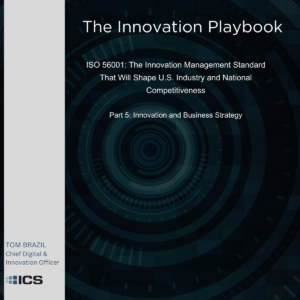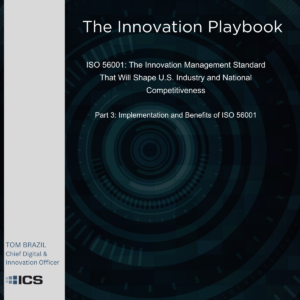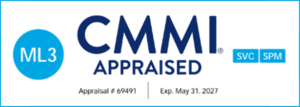In our previous discussions, we explored what ISO 56001 is, how it’s structured, and how it aligns with business strategy. Now, we widen the lens to examine how this standard is being adopted globally and what it means for U.S. industry and government.
The world is moving toward structured, systematic innovation management. Countries like China, Germany, South Korea, and the European Union are already embedding ISO 56001 principles into industrial policy, corporate governance, and national R&D strategies. If U.S. businesses and agencies fail to keep pace, we risk falling behind in critical areas such as artificial intelligence, cybersecurity, advanced manufacturing, and green energy innovation. We lagged behind in ISO 9001 adoption and spent decades catching up – we can’t afford to have that happen again.
In this installment, we explore:
- How ISO 56001 is being adopted globally and where the U.S. stands
- How the standard addresses emerging technologies
- Future trends that ISO 56001 will influence
- How ISO 56001 supports open innovation and collaboration
The Global Adoption of ISO 56001
As innovation becomes a key driver of national competitiveness, many countries are actively aligning with ISO 56001 principles to ensure their industries remain ahead of the curve.
Europe: Leading the Charge on Structured Innovation
The European Union (EU) has long been a proponent of standardized innovation management. The EU’s Horizon Europe program—one of the world’s largest R&D funding initiatives—encourages structured innovation governance, aligning closely with ISO 56001 principles.
Countries like Germany, France, and the Netherlands have integrated ISO 56001-based frameworks into:
- National innovation policies to ensure industry-wide adoption.
- Corporate governance models, where structured innovation is a requirement for funding.
- Public-private partnerships that drive strategic sectors such as renewable energy and AI.
📌 Example: Some of Germany’s largest industrial giants have embedded ISO 56001-aligned processes into their Industry 4.0 transformation, ensuring that innovation is repeatable, scalable, and measurable.
China: Aggressive Investment in Innovation Systems
China is not just investing in R&D—it’s institutionalizing innovation management. The Chinese government has:
- Integrated structured innovation policies into national industrial strategy.
- Created funding incentives for businesses that adopt standardized innovation frameworks.
- Prioritized AI, biotech, and quantum computing innovations within structured governance models.
- Taken the lead in ISO 56001-certified organizations
If the U.S. does not institutionalize structured innovation management, we risk losing technological leadership in key global markets.
South Korea & Japan: High-Tech Innovation, Now Systematized
South Korea and Japan have long been global leaders in innovation, with powerhouse corporations like Samsung, Hyundai, and Toyota investing heavily in structured R&D.
Both nations are embedding ISO 56001-based methodologies into:
- Corporate R&D governance, ensuring that companies operate within measurable innovation frameworks.
- Government funding requirements, where access to R&D incentives depends on structured innovation strategies.
Where Does the U.S. Stand?
The United States remains a global innovation powerhouse, but it risks being outpaced in structured innovation management. Even though the U.S. had the largest team of Innovation Management Experts of all global Technical Advisory Groups (TAGs) in ISO TC 279, that is not translating to the urgency we need from government and industry. Unlike the EU and China, the U.S. has been slower to adopt national innovation governance policies that align with ISO 56001.
However, leading organizations in defense, aerospace, finance, and healthcare are recognizing the need for a structured approach. The Department of Defense (DoD) and major government contractors are exploring ISO 56001 adoption as a way to improve technology development cycles, ensure funding accountability, and drive mission-critical innovation.
📌 The Opportunity: If U.S. industry and government align with ISO 56001, we can set the global benchmark for structured innovation management, rather than reacting to standards defined by Europe and China.
How ISO 56001 Supports Emerging Technologies
ISO 56001 isn’t just about traditional product development—it provides a structured way to manage emerging technologies like AI, blockchain, cybersecurity, and sustainability-driven innovations.
Artificial Intelligence (AI) and Data-Driven Innovation
AI is reshaping industries, but without a framework for governance, companies risk bias, ethical concerns, and security issues.
ISO 56001 ensures AI innovation is:
- Strategically aligned with corporate goals.
- Ethically governed, with built-in risk assessment.
- Measured for long-term value and adaptability.
Blockchain and Digital Trust Frameworks
ISO 56001 supports blockchain-based innovations by ensuring risk, compliance, and scalability are built into digital transformation efforts.
Sustainability-Driven Innovation
Governments and corporations are embedding sustainability into their innovation strategies. ISO 56001 helps organizations:
- Develop structured green technology roadmaps.
- Measure carbon impact and sustainability ROI.
- Ensure sustainability-driven R&D aligns with long-term corporate goals.
Future Trends in Innovation Management Under ISO 56001
Looking ahead, ISO 56001 will play a key role in shaping global innovation trends, including:
Government-Backed Innovation Standards
- The U.S. government and DoD may mandate structured innovation governance for federally funded projects.
Integration of AI and Predictive Analytics in Innovation Management
- Companies will use machine learning to track innovation performance and predict technology disruptions.
Increased Global Adoption of Innovation Certification
- Just as ISO 9001 (Quality) became a supply chain requirement, ISO 56001 could become mandatory for global R&D partnerships and even government contracts. It is projected that there will be 250,000 organizations worldwide that will be certified under ISO 56001 by 2030.
Greater Emphasis on Cybersecurity and Intellectual Property Protection in Innovation
- Organizations will use ISO 56001 frameworks to manage cybersecurity risks in emerging tech.
How ISO 56001 Supports Open Innovation and Collaboration
One of the most important shifts in global innovation is the move toward open innovation ecosystems.
ISO 56001 provides a structured way to:
- Foster collaboration between startups, corporations, and research institutions.
- Establish governance models for knowledge sharing and co-creation.
- Protect intellectual property (IP) while enabling faster innovation cycles.
What’s Next? Final Thoughts and Recommendations
As we conclude this series, our final discussion will focus on:
- The top three things business leaders should know about ISO 56001.
- Advice for companies considering ISO 56001 for the first time.
- Where organizations can find resources and training.
- Common misconceptions about ISO 56001.
ISO 56001 isn’t just a standard—it’s a competitive advantage. Organizations that implement structured innovation management will lead in their industries, drive strategic technological advancement, and secure their place in the future of global business.
Is the U.S. ready to lead in structured innovation? Let’s discuss in the comments.
Follow this series for more insights on how ISO 56001 will shape U.S. industry and global competitiveness.







